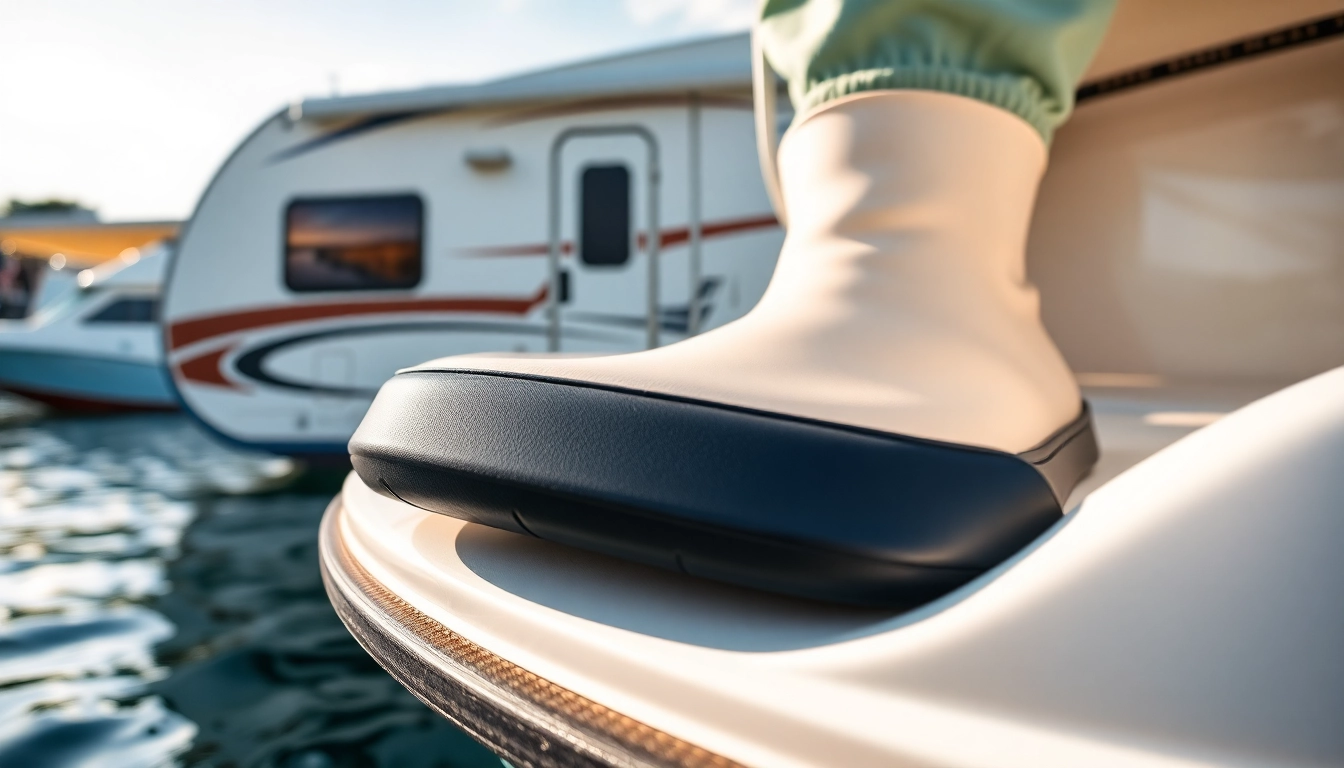Introduction to Marine and Vehicle Protective Coatings: Ensuring Durability and Shine
Maintaining the pristine condition of your watercraft or recreational vehicle requires more than regular cleaning; it necessitates robust protective measures. One of the most effective ways to safeguard gelcoat, paint, and other surfaces from environmental damage is through high-quality boots versiegelung. This specialized coating acts as a barrier against UV radiation, saltwater, dirt, and grime, significantly prolonging the vessel’s aesthetic appeal and structural integrity. Whether you’re a seasoned boat owner or new to marine care, understanding the significance of proper sealing can save time and money in the long run, ensuring your watercraft remains in optimal condition season after season.
What Is Boots Versiegelung and Why Is It Crucial?
Defining Boots Versiegelung
Boots versiegelung, or boat sealing, refers to a specialized protective coating designed to adhere to surfaces like gelcoat and painted finishes on boats, RV exteriors, and other watercraft-related surfaces. It creates a semi-permanent or durable film that shields against physical, chemical, and environmental stressors. Modern versiegelung products utilize polymers, ceramics, or advanced sealants that lock in gloss while forming a barrier against contaminants.
Why Is It Essential for Water and Weather Protection?
Exposure to harsh environmental conditions—such as salty seawater, UV rays, and fluctuating temperatures—can degrade the surface of your boat or vehicle, leading to oxidation, dullness, and structural deterioration. A high-quality boots versiegelung serves as the first line of defense, dramatically reducing the impact of these factors. It minimizes water absorption, prevents oxidative damage, and maintains the surface’s smoothness, which is crucial for both aesthetics and longevity.
For comprehensive protection, consider products like Boots versiegelung, which are formulated not only for durability but also for ease of application, making professional-grade protection accessible for enthusiasts and owners alike.
Comparison With Traditional Methods
Unlike conventional waxing or simple polishing, versiegelung provides a longer-lasting, more resistant layer. Waxes tend to degrade quickly and require frequent reapplication, whereas modern polymer and ceramic sealants cure into a semi-permanent layer that can last months or even years with proper maintenance. This results in reduced labor, fewer reapplications, and sustained surface protection, which is especially critical for vessels exposed to marine environments.
Choosing the Right Boots Versiegelung: Tips for Beginners
Criteria for Selecting the Perfect Product
Selecting the ideal boots versiegelung depends on several key factors:
- Material Compatibility: Ensure the product is suitable for gelcoat, painted surfaces, or specific materials like fiberglass.
- Durability: Look for formulations offering long-lasting protection—often indicated by the manufacturer’s claims or performance data.
- Ease of Application: Consider products that are user-friendly, especially for DIY owners, such as spray-on or wipe-on variants.
- Environmental Resistance: The best sealants offer protection against UV, salt, algae, and chemical pollutants.
Polymer Seals vs. Waxes: What’s Better?
Polymer-based coatings and ceramic sealants have become industry standards owing to their superior protective qualities. Polymers form a chemically bonded film that resists UV, dirt, and water ingress. They typically last longer than waxes, which are organic and tend to erode faster under exposure. Waxing can be aesthetically appealing with a deep gloss but often requires frequent reapplication—every few months—while polymer coatings can endure up to a year or more with proper care. For durability and low maintenance, most experts recommend polymer or ceramic coatings over traditional waxes.
Material Compatibility Tips
Always verify that your chosen boots versiegelung is compatible with your boat’s surface material. For example, gelcoat surfaces respond well to polymer sealants, whereas painted surfaces may require specific formulations to prevent staining or surface damage. Reading product specifications and consulting manufacturer instructions help avoid adverse reactions.
Step-by-Step Application and Maintenance
Preparing the Surface
Proper surface preparation is vital for an effective seal. Start by cleaning the surface thoroughly with products like BCC Power Cleaner. Remove all dirt, salt deposits, and oxidation. For heavily soiled areas, use a dedicated foam gun such as the BCC Snow Foam Gun to loosen grime efficiently. After cleaning, ensure the surface is completely dry before proceeding.
Applying the Sealant: Techniques for Even Coverage
For best results, utilize a microfiber towel such as BCC Microfaser Towel or a soft polishing pad like the BCC Polierpuck extra weich. Apply a thin layer of the boots versiegelung using a foam applicator or microfiber cloth in a circular motion. Work in small sections to ensure even coverage. For complex areas or concave surfaces, special tools like BCC Polierpuck konkav can help reach tight spots.
Post-application Curing and Maintenance
Allow the coating to cure as per manufacturer instructions, usually 24-48 hours, avoiding water exposure during this period. For ongoing maintenance, rinse the vessel with fresh water regularly, and use cleaning products compatible with sealed surfaces. A periodic reapplication of the coating, typically every 12-24 months, will restore the protective layer and maintain shine.
Maintaining Your Coating for Long-Term Results
Regular Cleaning and Re-sealing
Consistent cleaning with gentle, pH-neutral products like BCC Towels Vorteilspack keeps surface contaminants at bay and preserves the integrity of the sealant. When signs of wear or discoloration appear, reapply the boots versiegelung to restore protection. Using tools like BCC Polierschwamm ensures smooth reapplication without damaging the coating.
Removing Difficult Contaminants
Stubborn algae, bird droppings, or salt deposits should be addressed promptly. Use appropriate cleaning agents and soft cloths to avoid scratching the surface. For deep staining or oxidation, polishing compounds such as BCC Power Polish can help refresh the surface before re-sealing.
Signs of Protectant Degradation
Faded gloss, increased dirt accumulation, or water not beading off the surface indicate that reapplication is due. Regular inspections will help catch issues early, prolonging the life of your coating.
Common Mistakes and Expert Tips for Optimal Results
Incorrect Surface Preparation
Skipping cleaning or using abrasive products can undermine the adhesion of the sealant. Always ensure surfaces are impeccably clean and dry.
Using Wrong Products or Application Methods
Applying a sealant not suited for your material, or in overly thick layers, can cause streaks or uneven protection. Follow the manufacturer’s application guidelines carefully.
Insufficient Drying or Curing Time
Rushing the process by exposing surfaces to water or sunlight prematurely can lead to incomplete curing or surface blemishes. Patience is key for a durable, high-quality finish.

